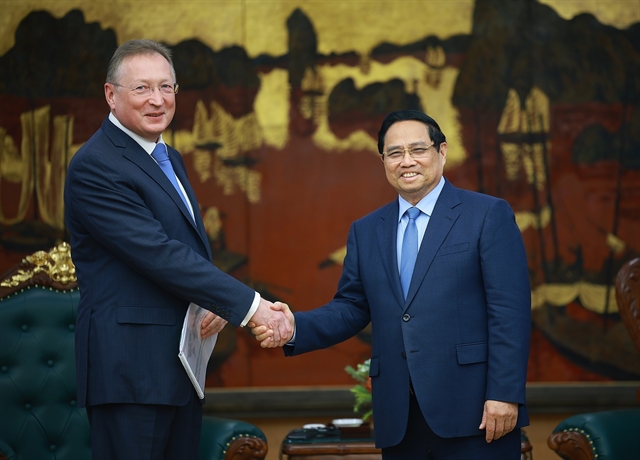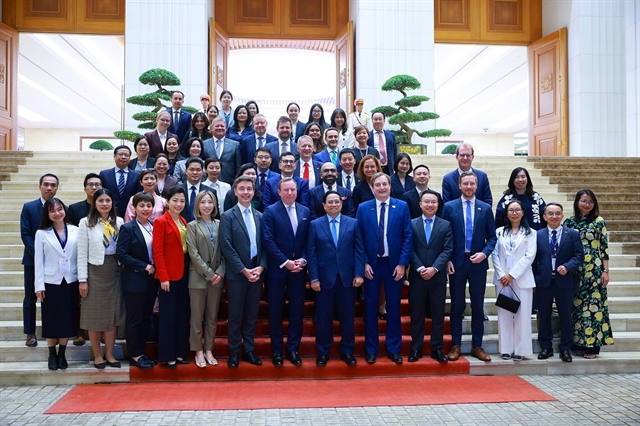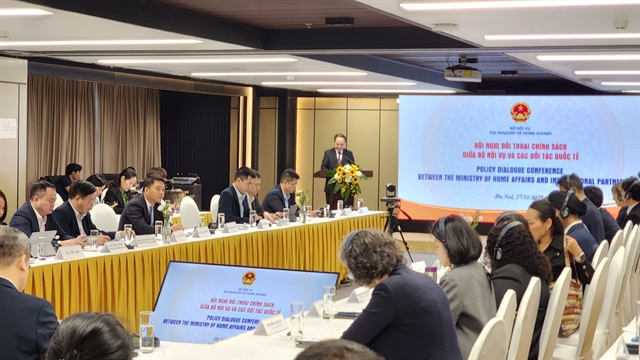 Economy
Economy

Efforts to decrease the trade deficit with China is an important policy and one of the Ministry of Industry and Trade (MoIT)’s chief concerns, in addition to increasing exports to this market, says Industry and Trade Deputy Minister Đỗ Thắng Hải.
 |
| Efforts to decrease the trade deficit with China is an important policy and one of the Ministry of Industry and Trade (MoIT)’s chief concerns. — Photo dantri.com.vn |
HÀ NỘI — Efforts to decrease the trade deficit with China is an important policy and one of the Ministry of Industry and Trade (MoIT)’s chief concerns, in addition to increasing exports to this market, says Industry and Trade Deputy Minister Đỗ Thắng Hải.
The chronic trade deficit with China has long troubled Việt Nam’s economy, though the dependence on Chinese imports is hard to avoid for a rising economy like Việt Nam’s. According to the General Department of Customs, China is still the largest exporter to Việt Nam, accounting for US$40.24 billion in the last 10 months, though the total has decreased by 1.4 per cent compared to the same period last year.
Vietnamese exports to China have been facing many challenges as China is in an economic downturn. But despite China’s many trade barriers against Vietnamese products, in the past 10 months of 2016, Việt Nam’s exports to China accounted for 12 per cent of the country’s total.
Việt Nam’s main imports from China focus on manufacturing products, with machinery, equipment, accessories, steel, phones and phone accessories, textile materials, leather, chemicals and vehicles, each worth around $1 billion.
Nonetheless, under pressure of the rule of the origins of goods, Vietnamese supporting industries are expected to increase production, enabling the country’s export potential to grow and imports to decline. This would reduce the trade deficit towards a better trade balance between the two countries. Furthermore, Vietnamese authorities are urged to impose stricter quality control on imported Chinese materials.
Experts noted that if more free trade agreements (FTA) go into effect, Vietnamese exporters will have to pay more attention to the origins of goods to avoid importing materials from China if they wish to take advantage of said FTAs in preferential tax treatment and to avoid technical barrier and dumping cases.
Businesses are moving away from Chinese imports by diversifying imports from other markets, especially from South Korea since implementation of the Việt Nam-South Korean FTA on December 12, 2015. Imports from South Korea constitute 18 per cent of total imports as of October 2016, having increased 10.8 per cent since last year.
South Korea is now the second largest exporter to Việt Nam, with a total export turnover of $26 billion, an increase of $2.7 billion, or 11.8 per cent, compared to the same period in 2015. Due to a 10-per cent tax on Vietnamese petrol, the amount of imported petrol from South Korea to Việt Nam has increased to 1.34 million litres, equal to $633 million.
Japan and Thailand’s exports to Việt Nam are also on the rise, at $12.2 billion and $6.9 billion, respectively, in the first 10 months of 2016. Imports from the US accounted for $6.86 billion.
The MOIT asserted based on these figures that Việt Nam would slowly utilise the signed commitments and FTAs with these countries, to gain freer markets and reduced import tax levels and shrink its dependence on Chinese imports. — VNS




